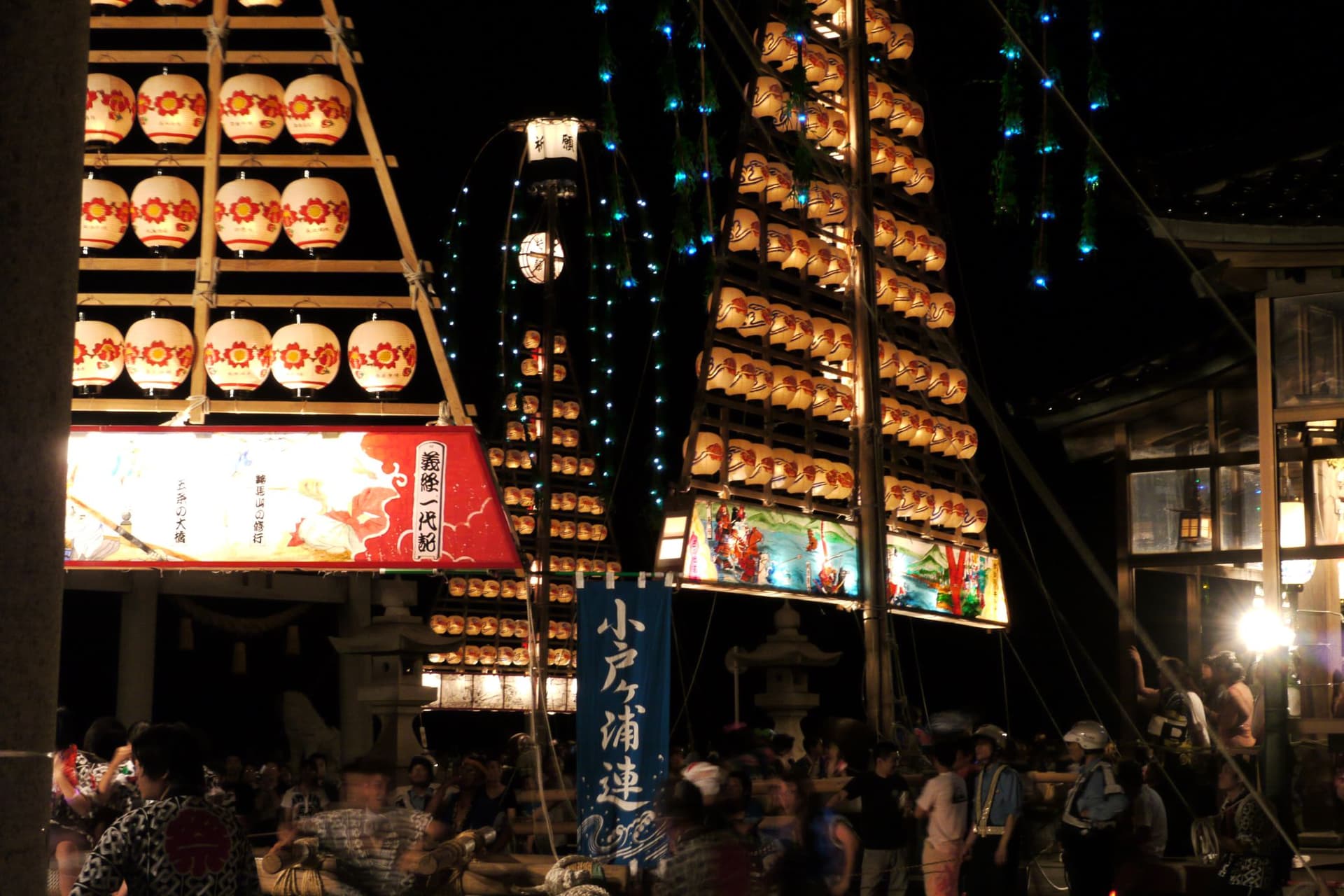
Suwa Shrine
諏訪神社- Dentetsu-Uozu Station
- Walk 18 minutes
Perched on a hillside with sweeping views of Toyama Bay, Suwa Shrine in Uozu is a historic coastal sanctuary that has long been at the heart of local maritime faith. Its origins date back to the year 701, when a divided spirit of Suwa Taisha from Shinano (present-day Nagano Prefecture) was brought to Uozu by traders and fishermen, formalising a spiritual connection that had developed through active exchange of fish, salt, and produce between regions. The shrine originally stood on the shoreline, but repeated damage from waves led to multiple reconstructions, including a significant relocation in 1873 to its current site - formerly the salt storehouse of the Kaga Domain.
The main deity enshrined is Takeminakata-no-Mikoto (Suwa Myōjin), revered as a god of wind, water, and victory. He is flanked by Ōyamakui-no-Mikoto, associated with Mount Hiei and protector of Hiyoshi shrines, and Kotoshironushi-no-Mikoto - also known as Ebisu - the cheerful god of fishing and commercial success. Together, these three deities represent the community’s enduring hopes for safety at sea, plentiful catches, and prosperity.
The current shrine buildings were reconstructed in 1930 using Japanese cypress, a material chosen for its purity and resilience. The worship hall is particularly striking, with 60 ceiling paintings depicting red snapper, yellowtail, crabs, and other sea life interspersed with birds and seasonal flora - an artistic celebration of Uozu’s marine environment. A statue of Ebisu, crafted in 1905 by a sculptor from nearby Namerikawa and later restored in 1995, continues to watch over worshippers inside the hall.
Stone walls found on the grounds are believed to be remnants of the former Uozu Castle, further emphasising the site's deep historical ties to the region. In 1940, Suwa Shrine was officially recognised as a Village Shrine (sonsha) by Toyama Prefecture.
Among the shrine’s most important annual events is the Tatemon Festival, held in early August. Massive 16-meter wooden floats adorned with lanterns are pulled through the streets in a powerful display of spiritual energy and community strength. Recognized both as a National Important Intangible Folk Cultural Property and as part of UNESCO’s Intangible Cultural Heritage, this event is a dynamic reflection of the area's maritime roots.
Seasonal rituals continue year-round, including the Ebisu Festival, fire prevention rites, and New Year prayers, all of which reinforce Suwa Shrine’s role as a cultural and spiritual anchor for the people of Uozu. Whether visited in quiet reflection or during the vibrant Tatemon Festival, the shrine offers a rich experience of coastal Shinto tradition and enduring local devotion.
At Hey Japan!, we strive to keep the places listed on our website as current as possible. However, it is important to note that location owners or management may make changes to their plans, including canceling events, altering opening times, or modifying admission requirements, without prior notice. To ensure that you have the most accurate information, we recommend checking official websites before visiting any location.
Last Updated:














